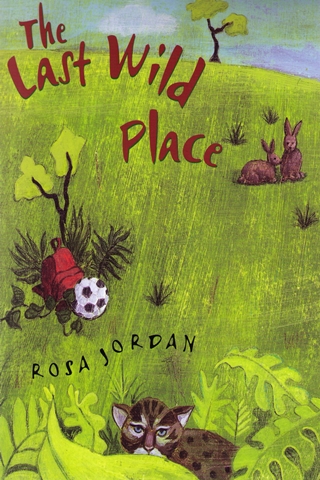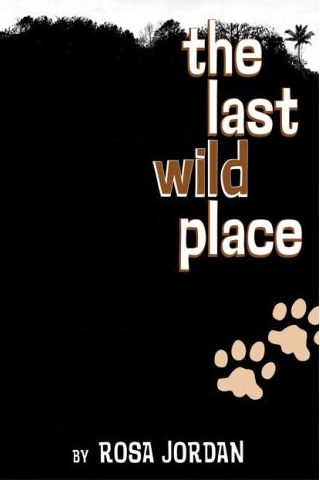
Fitzhenry
& Whiteside, 2009
Paperback edition, CDN$12.95
ISBN 978-1-55455-146-0

Peachtree
Publishers, 2008
Hardback edition, US$15.95
ISBN 978-1-56145-458-7

Fitzhenry
& Whiteside, 2009 |

Peachtree
Publishers, 2008 |
THE LAST WILD PLACE
Chip Martin’s biggest problem so far this year has been deciding whether he’ll try out for soccer or baseball in seventh grade. But now things are getting complicated. His brother Justin is away at college and his older sister Kate is busy with high school activities. His mother’s lifelong friendship with Booker Wilson has suddenly taken a romantic turn. And now his best friend Luther won’t speak to him. Even worse, Chip has to face the possibility of being uprooted himself. Feeling friendless and alone, Chip explores the marshy woods on an abandoned farm near his home. There he discovers something unbelievable: a family of Florida panthers that has been driven out of its home in the Florida Everglades.
Alarmed when he hears that the few acres of woodland where the panthers have holed up is about to be cleared to make way for a meatpacking plant, Chip concocts a plan to protect them and the wild place–the very last wild place in this area of cultivated farms. He eventually learns that he has more friends than he thought, and that they all want the same thing–to find a safe home for wild animals. And if they’re lucky, a safe place for themselves, too.
The Last Wild Place is the third in a series that begins with Lost Goat Lane and The Goatnappers. The stories follow chronologically but each is told from a different character’s point of view–the first that of 13-year-old Kate, the second that of 15-year-old Justin, and this one through the eyes of almost-13-year-old Chip and his friend Luther.
Recognition
2008 American Society for the Prevention of Cruelty to Animals Henry Bergh Young Adult Award, given annually to “books that promote the humane ethic of compassion and respect for all living things."
2008 Green Earth Honor Book, “for books that inspire a child to grow a deeper appreciation, respect, and responsibility for the natural environment, and best raise awareness of the beauty of the natural world and the responsibility that we have to protect it."
Pennsylvania School Librarians Association 2009 Young Adult Top Forty list
Kansas State Reading Circle 2009 Recommended Reading List (Intermediate Level)
2010 Prairie Bud Children’s Book Award Nominee (selected by South Dakota Library Association, South Dakota Reading Council, South Dakota State Library, and South Dakota Elementary School Principals)
Reviews
“What
a touching read this was. The Last Wild Place, written by Rosa
Jordan, is just one of those books that will touch your heart and
make you want more from the author instantly. Love and wonder is
shown in two very different aspects, human life and the environment,
that turn out to not be that different after all. Chip
Martin is a pretty ordinary kid, except that his mom is now dating an
old family friend and his best pal in the world will no longer speak
to him. He begins to feel quite alone in his world, with the thoughts
of moving in his head and his one friend gone. Chip begins exploring
the marshes and woods behind a local abandoned farm, shocked to find
a family of panthers that has been driven out of their home by a
recent hurricane and constant land development. Forming almost a bond
with the panthers, both being alone in the world and having to move
from their home, Chip vows to protect them when a meat-packing plant
decides to take the last bit of land they have left. There
is an intense feeling of love in this story, between Chip and the
panthers, his family, his friends, and everyone in between. Even
though Chip often feels alone in his little world, he soon discovers
how many people are behind him and support him in everything he does.
This is a great novel for middle graders or young adults and one that
you may even want to read together.”
—Patchwork
of Books. http://apatchworkofbooks.blogspot.com/2008/10/last-wild-place.html
“Jordan
returns with another eco-friendly novel featuring the Martin family.
Now that Justin is away at college, Chip, 12, is the man of the
house. His mother has become romantically involved with his friend
Luther's uncle. The town's community center is providing a temporary
home to families who were displaced by a recent Gulf Coast hurricane,
and as Luther befriends some of those kids, he seems to be distancing
himself from Chip. Seeking solace at a deserted property that he and
Luther discovered several years earlier, Chip makes an amazing
discovery: two Florida panther cubs have somehow traveled from the
Everglades to the abandoned site and have established a home there.
Chip has visions of befriending the animals, but the future of all
the wildlife in the marshy sanctuary is unexpectedly put into danger
when a construction crew arrives to raze the barn and turn the
property into a meat-packing plant. When the adults fail to come up
with an immediate solution to protect the animals, Chip and his
classmates take matters into their own hands. Reminiscent of Carl
Hiaasen's Hoot
(Knopf, 2002), The
Last Wild Place
is an empowering story of friendship and kids who step up to make a
difference. Sprinkled liberally with environmental messages, it
manages to avoid crossing the line into didacticism. The characters
are fully realized and the plot moves along at a good clip. While
readers of Jordan's first two stories will enjoy meeting up with
familiar characters, the novel easily stands alone.”
—Kim
Dare, Fairfax County Public Schools, VA. School
Library Journal,
http://www.schoollibraryjournal.com/article/CA6633079.html